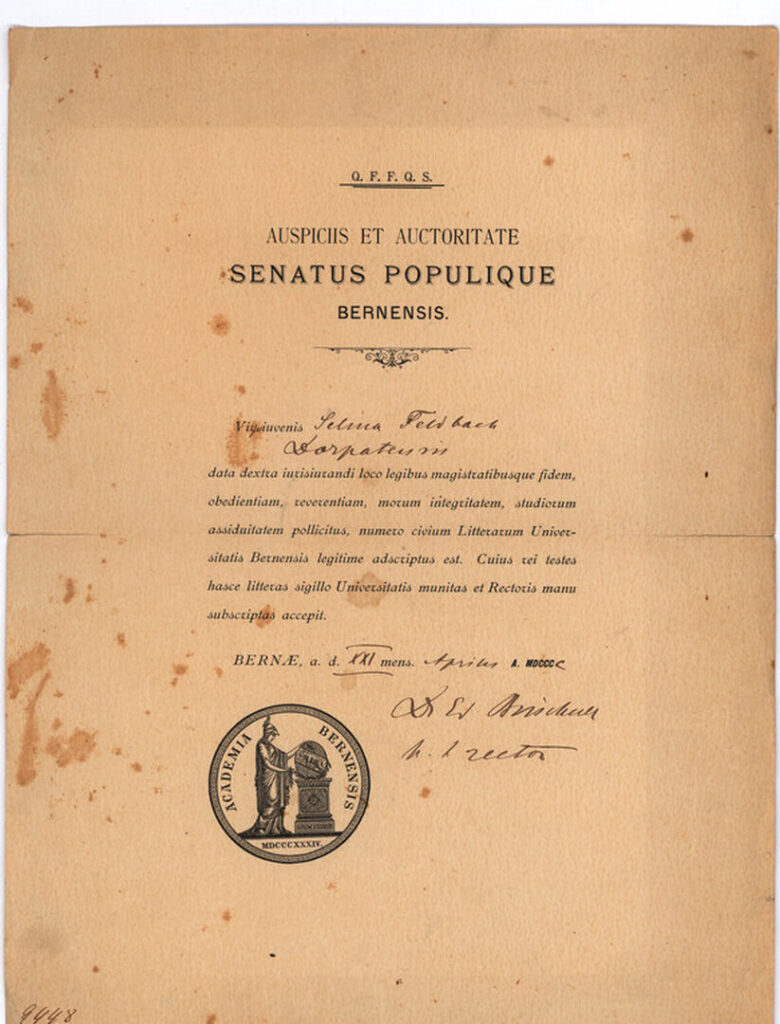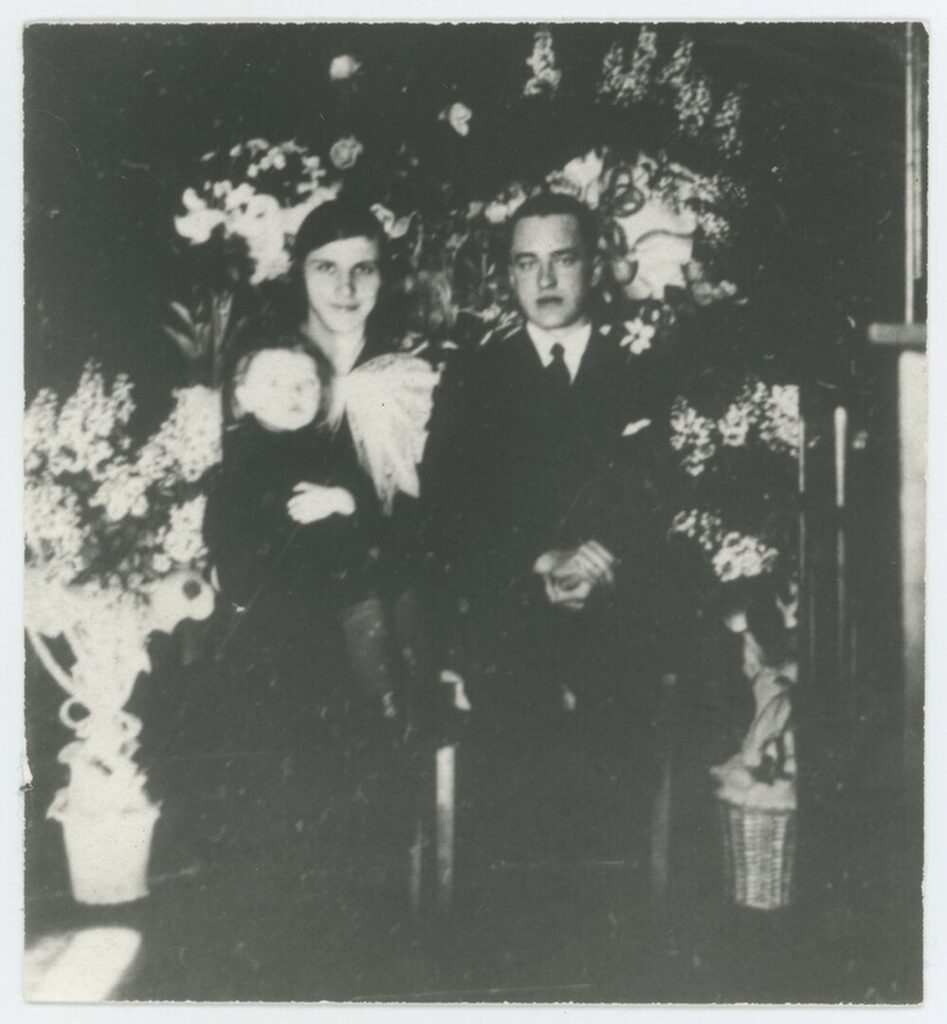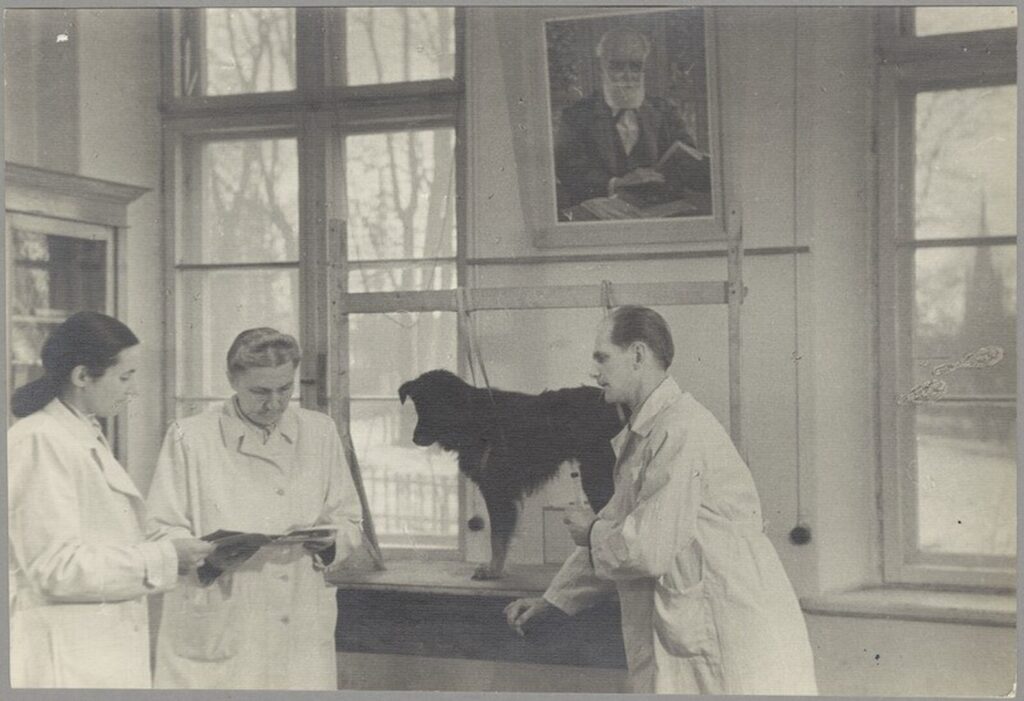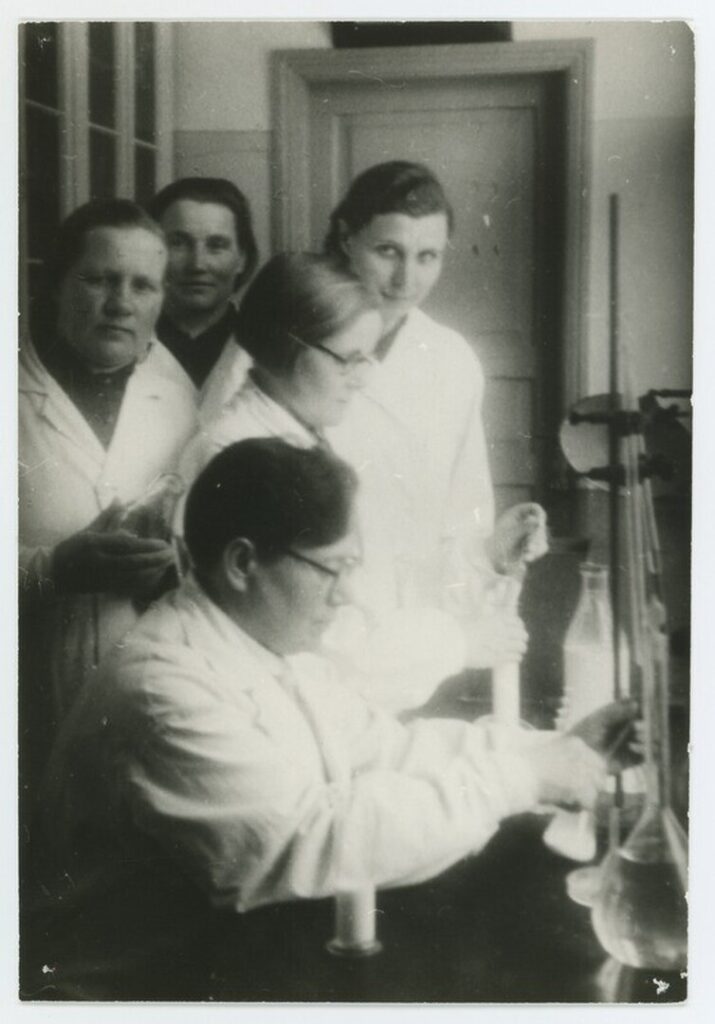Between 1904 and 1939, about 30 Estonian women earned doctorates, but the actual number is difficult to determine because people at that time often identified themselves in different documents as either Estonian or Baltic German. According to Estonian researchers, however, women earned doctorates mainly in medicine and the natural sciences, because that was where careers were open to them.
Janet Laidla, lecturer in Estonian history at the University of Tartu, said, “Before World War I, in German culture, a doctorate was the first degree you received after defending a dissertation. It wasn’t quite the same as a bachelor’s degree today, however, as you had to do quite a lot of work for a doctorate.” She said a doctorate at the time was essentially equivalent to a Ph.D. today. “Back then, you would do a Ph.D. mainly because you wanted to go deeper into research,” she continued.
In their recent research article, Laidla and Lembi Anepaio, a junior researcher at the University of Tallinn, examine the initial cohort of Estonian women to obtain doctoral degrees. The authors identified 33 of them. According to them, new information is continually being established, so the total number of women is not definitive. The exact number of Estonian or Baltic Germans among them cannot be determined either. “Nationality started to be indicated on identity cards only after the Republic of Estonia [interwar period]. Moreover, people often marked it differently on different documents [during the war and in the post-war periods],” Laidla said.
Several firsts
Laidla and Anepaio said that the very first woman from Estonia to have earned a doctorate is Lea Gutkin [likely woman of Jewish origin who moved abroad from Tallinn,] who defended her doctorate in medicine at the University of Freiburg in Germany in 1904. But the very first Estonian woman to have earned a doctorate is Selma Feldbach, who received her medical degree from the University of Bern in 1905, the researchers suggested.
“But even Feldbach listed herself in some documents as German or Baltic German,” Laidla said, pointing out a typical occurrence at the time. People were free to communicate their nationality in any way they considered most advantageous. Especially after the signing of the Tartu Peace Treaty in 1920, when many Estonians living in Russia began to immigrate to Estonia, it was important for them to emphasize their ties to Estonia, and given the circumstances surrounding the resettlement of Baltic Germans during World War II, this opportunity was often used when there was a possibility to establish Baltic-German ancestry.

“If we have to name women who more consistently identified themselves as Estonian, Beatrice Pallon and Helene Taar to mind, both of whom defended their doctorates in 1909,” Laidla continued. It is not entirely clear which of the two defended earlier, as the date of Pallon’s defense could only be determined by examining Zurich sources.
In their article, Laidla and Anepaio identified 33 Estonian women who earned their doctorates before World War II. “Back then, doctorates had slightly different values in different countries, so we decided to define it in terms of men and women getting the same degree from the same university,” the lecturer said. In the days of the Russian Empire, men also went abroad to study, but unlike women, they could graduate at home.

Doctors, teachers and midwives
While women in the Russian Empire were relatively late in gaining access to higher education in the early 20th century, it was not unheard of to encounter a highly educated woman, according to Laidla. By the late 19th century, women had begun to pursue higher education abroad, and in the early 1870s, the czar granted women special permission to enroll at the University of Helsinki in Finland. “In the second part of the 19th century, some universities in England and the United States admitted female students. In Switzerland, the universities of Zurich and Bern opened their doors to women even earlier,” Laidla said.
In the Russian Empire, women were admitted to university as early as the 19th century, but initially not as students. Laidla said that they came to take various professional exams: “For example, they took midwifery exams, then there were also female dentists in the Russian Empire very early on, and women progressively started to take many home-schooling exams as well.”
For example, an 1834 law required tutors of all genders to pass a professional examination at a university or secondary school. “For a long time, this was the highest education a woman could receive,” the researcher said. By the end of the 19th century, women could also pass the exam to become a pharmacist’s assistant.
In 1905, women were allowed to attend university in the Russian Empire, but this permission was soon revoked. Instead, women’s higher education institutions soon sprang up throughout the empire, including in Tartu, Estonia. “You got essentially as good an education there as you did at university and many of the same lecturers taught there. It was just a question of status – it wasn’t quite a university,” Laidla said.
Women were finally admitted as full students from 1915. Although the proportion of women students remained modest in the early years, by 1918 they were already quite numerous. “During World War I, women made a greater impact in many aspects of life. With so many men sent to the front, there was space and places for women, who were also willing to pay the price,” Anepaio explained.
She said that when women attended university, they chose to study more practical topics, such as midwifery, dentistry, and, during World War I, medicine. “During World War I, of course, more doctors were needed: either instead of or in addition to men,” Laidla said. From the mid-19th century, women in the Russian Empire also worked as nurses, but the profession did not require a university education.

Assistants and lecturers
Between the two world wars, women’s career choices changed and women began to earn more degrees in the humanities. “Many women who wanted to become secondary school teachers were doing their master’s degrees in the Faculty of Philosophy. This probably gave them some competitive advantage,” Laidla suggested. While in the early 1920s, women tended to work as primary school teachers, by the end of the 1930s, according to the researcher, their share in secondary schooling had increased.
Between the two world wars, Estonian women were awarded doctorates mainly in the fields of medicine, natural sciences and veterinary medicine. “It may also be a question of what the faculties and positions were at the university,” she said. The faculties of medicine and natural sciences housed numerous research institutes, laboratories and clinics, which employed lecturers, professors and associate professors as well as assistant and senior lecturers.
“When the academic hierarchy was broader, women also had more opportunities to enter the career path,” the lecturer said. But it was still extremely difficult for women to become professors, she added. Nevertheless, some women have worked as teachers of Finnish, English and Swedish. Marta Schmiedelhelm, an archaeologist, was employed for a long time at the university as a conservator or an assistant. “She was surely held in very high esteem as university documents show that they tried to create the right conditions for her to do a Ph.D.”
But women hit a ceiling in certain professions, Anepaio said. “That’s why, unlike men in Estonia, they didn’t have much of a chance with the faculty of theology, for example. It’s the same with the studies of law. Women could not become judges and it was extremely difficult to become a lawyer,” the researcher explained. However, there was Vera Poska-Grünthal, for example, who, although she did not finish her doctorate, worked as a lecturer and wrote a dissertation on rights of the child and social law. “She was one of the few female university researchers,” Anepaio said.

Baltic German and Estonians’ intertwined history
In their article, Laidla and Anepaio write extensively about three Baltic German women: Margarethe von Wrangell, Elisabeth Schiemann, and Leonie von Keyserling. “The three of them went to university very early, pursued careers and actually worked at the university. They broke the gender stereotypes and in some cases ethnic prejudices of their time,” Anepaio explained.
Laidla said the contribution of Baltic Germans to Estonian historical consciousness is limited. “When Estonia became independent, the hatred of the Baltic Germans who ruled here was so great that they tried to suppress themselves and take on a more French and English profile,” she said. At the same time, Estonians and Baltic Germans are so intertwined that, according to Anepaio, the history of the region cannot be written without the latter.
For example, one of the researchers, Margarethe von Wrangell, defended her doctoral thesis in chemistry in 1909. In 1909, she worked as an assistant at the Agricultural Experimental Station in Dorpat, and later had the opportunity to intern with Nobel laureates William Ramsay and Marie Curie in London and Paris. According to Laidla, all of this was economically possible for Von Wrangell, but her equally talented friend Ebba von Husen had to take a teaching job after graduation for financial reasons.
Anepaio said that this is where we can play a game of imagination about what might have been if Von Wrangell had had the opportunity to do her world-class research in Estonia. “In fact, there was a lot of potential in both the Baltic Germans and the Estonians, but they largely had to keep that potential under wraps or use it somewhere else,” she said.
Von Wrangell’s reputation, Anepaio and Laidla suggested, may have been at least indirectly a positive role model for other women. “The fact that Estonian students wrote to her, calling her a brilliant scientist who inspired ideas they had never considered, shows how famous she was in her lifetime and how little we know about her and others like her today,” Laidla explained.
As von Wrangell’s memoirs show, her career as a scientist was not even approved by all of her relatives. According to Laidla, society at the time, as it is today, was divided over whether it was appropriate for a woman to have a career in addition to raising a family. “It’s just that the percentage of people who thought that it was normal for women to have a career, and that’s the way it should be, was maybe a little lower than it is today,” she said.
Janet Laidla and Lembi Anepaio published their study in the Yearbook of The Learned Estonian Society (ÕES).
This article was originally published on the Estonian Public Broadcasting online news portal. Author: Airika Harrik, editor: Kristina Kersa
 Back
Back



